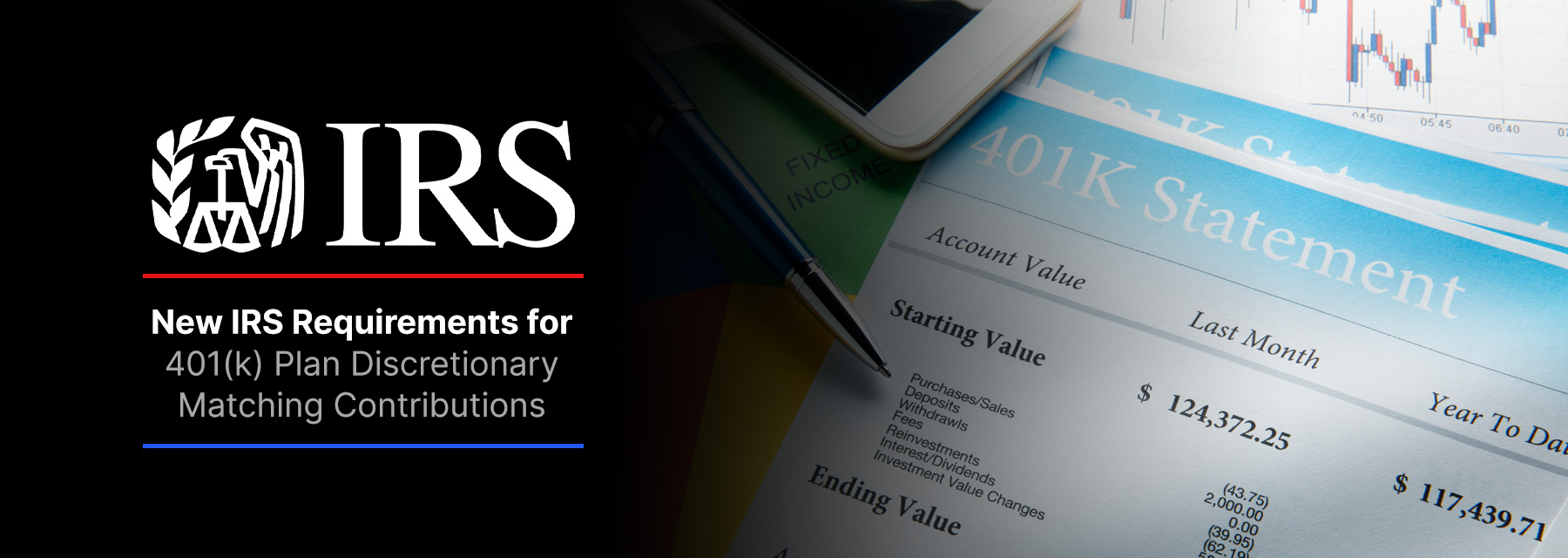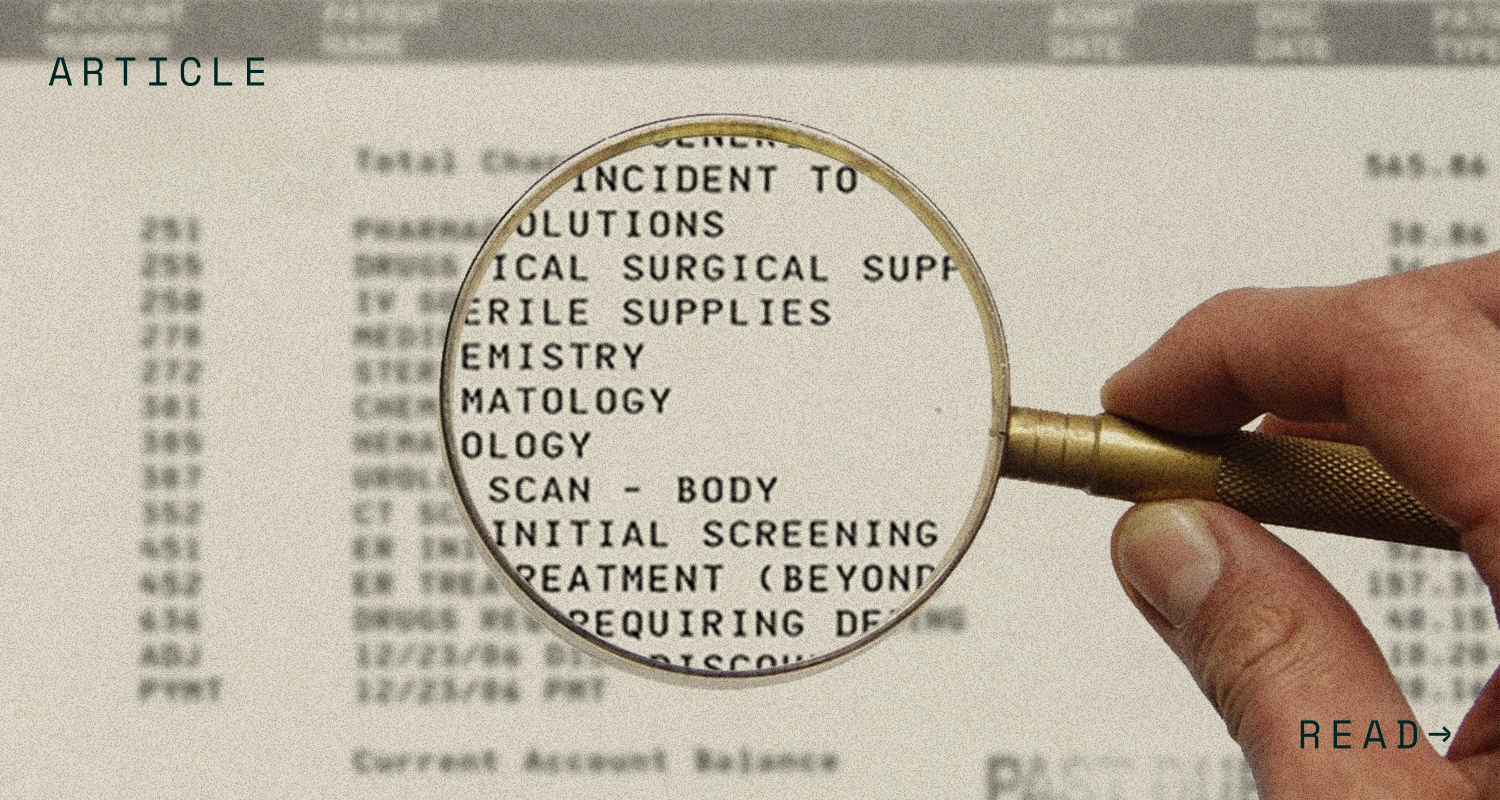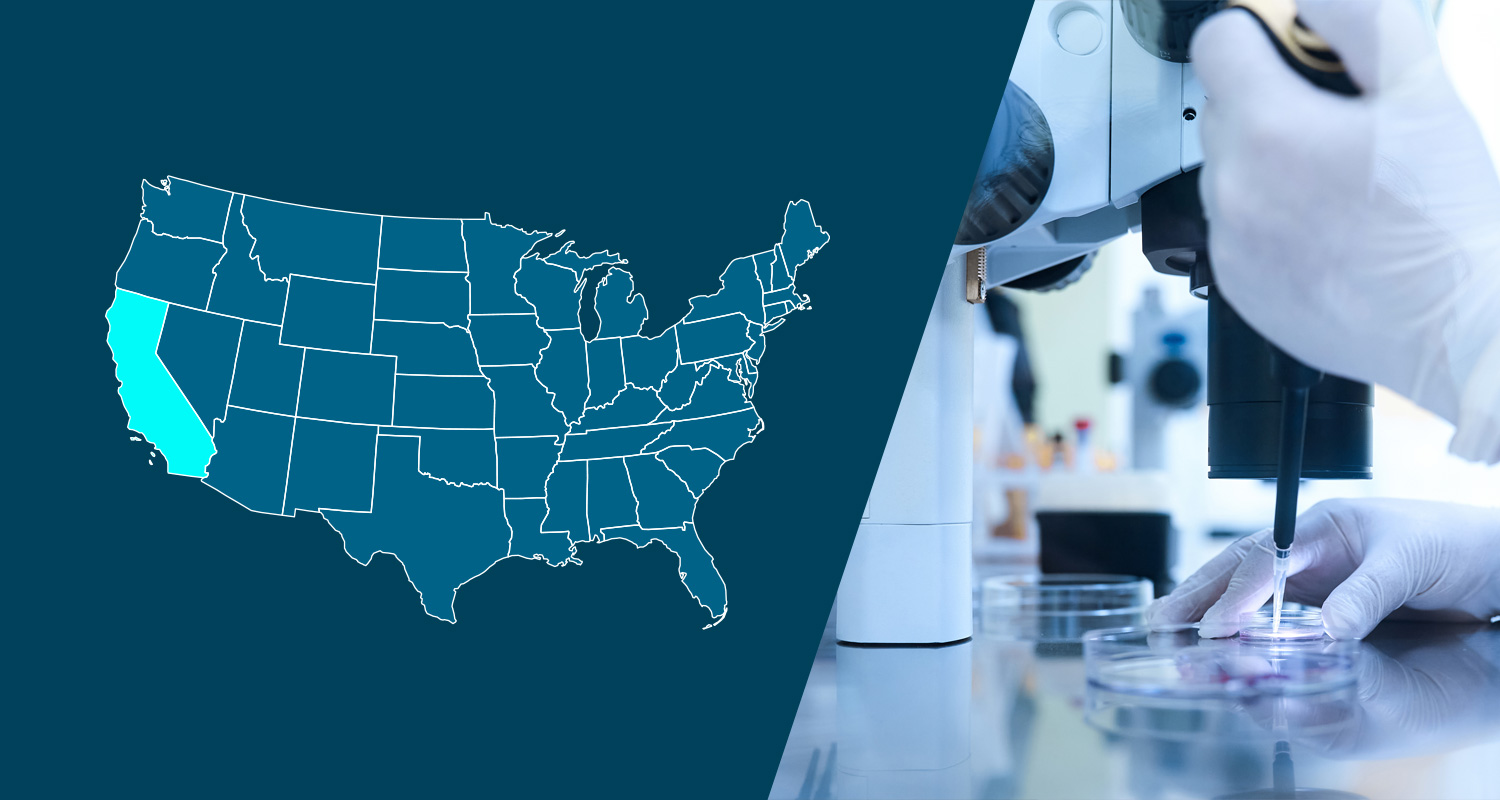Every six years, the Internal Revenue Service (IRS) requires most retirement plans to update their plan documents to comply with new laws, regulations, and guidance issued by Congress, the IRS, and the Department of Labor (DOL).
This amendment process (often called “restatement”) ended on July 31, 2022, for most 401(k) plans. Seemingly buried in this most recent restatement guidance was a new requirement for discretionary matching contributions.
Compliance Snapshot
If an employer has selected discretionary matching contributions for its 401(k) plan, then two notices must be provided to comply with new IRS guidance:
- The employer must inform the plan administrator and trustee in writing about the discretionary matching contribution’s existence. This notice informs the plan administrator and trustee about the matching contribution while providing plan funding directions.
- The employer must also inform its employees in writing about the discretionary matching contribution’s existence, specifically describing which employees are eligible for the discretionary match and when these employees may receive this discretionary matching contribution.
New Requirements for 401(k) Plan Discretionary Matching Contributions
During the most recent restatement cycle, the IRS considered eliminating 401(k) discretionary matching contributions since Internal Revenue Code regulations require that all 401(k) contributions must follow a “predetermined formula.”1
By definition, a discretionary matching contribution does not follow a predetermined formula (often referred to as the “definitely determinable” formula requirement), as the employer can decide how much to contribute.
However, the IRS decided against eliminating discretionary matching contributions as long as employers follow these rules:
- The employer must inform the plan administrator and trustee in writing about the discretionary matching contribution’s existence. This notice informs the plan administrator and trustee about the matching contribution while providing plan funding directions.
- The employer or the plan administrator must inform the employees in writing about the discretionary matching contribution’s existence, specifically describing which employees are eligible for the discretionary match and when these employees may receive this discretionary matching contribution. This notice explains the specifics of the matching contribution, helping to satisfy the “definitely determinable” formula requirement.
What should the notice say?
For the plan administrator/trustee notice, employers may document matching contribution information informally, such as through 401(k) plan committee minutes or a memorandum to the file. Either will satisfy the IRS’s requirements.
For the employee notice, employers should include the following items:
- The plan’s name
- The plan’s contact person or department
- The date of the notice
- The matching contribution’s effective date
- The type of matching contribution (e.g., a flat dollar amount or a percentage)
- Any limits applicable to the matching contribution (e.g., capped at 5% of eligible employee deferrals)
- How the match is determined (e.g., the time period on which the matching contribution is made, such as each payroll period or annually)
- Any other details about the matching contributions
For administrative ease, employers can contact their 401(k) plan’s recordkeeper to see if they have a sample employee notice to use.
When should the employee notice be provided?
The timing of the employee notice depends on when the employer’s matching contribution is funded. For example, the notice date may change if the employer funds matching contributions annually or if they fund them during every payroll period.
- If the employer funds matching contributions annually, then the employer must provide the employee notice within 60 days after the matching contribution has been made to the plan.
- If the employer funds matching contributions less than annually (such as with every payroll, monthly, or quarterly), then the employer must provide the employee notice within 60 days after the last matching contribution has been deposited for the plan year.
As a best practice, employers should also notify employees in writing if the matching contribution formula changes at any point during the plan year.
What Employers Need to Know
The effective date of these new discretionary matching contribution rules depends on the date the employer adopted an amended (or restated) plan document during the last restatement cycle (occurring between August 1, 2020, and July 31, 2022).
For example, if the employer executed an amended plan document in 2021, then these notices were required to be distributed for the 2022 plan year. However, if the employer executed an amended plan document in 2022 (which most employers did), then these notices are required to be distributed for the 2023 plan year.
Employer Actions
As a best practice, employers should review when they executed their amended plan documents (whether it was in 2020, 2021, or 2022). Further, employers should connect with their 401(k) plan’s recordkeeper to see if and when notices were previously distributed or if notices will be distributed in 2023 according to the timelines listed above in When Should the Employee Notice Be Provided.
Although the recordkeeper may help the employer with these notices, it is the employer’s legal responsibility to ensure that these notices are timely distributed.
Additional Resources
- Internal Revenue Service Announcement 2020-7, Third Six-Year Cycle Pre-Approved Defined Contribution Plans (2020).2
- Internal Revenue Service. Determination, Opinion and Advisory Letter for Retirement Plans – Staggered Remedial Amendment Cycles (August 30, 2022).3
- 26 CFR Section 1.401 – 1, Qualified pension, profit-sharing, and stock bonus plans (2020). https://www.law.cornell.edu/cfr/text/26/1.401-1
- Internal Revenue Service Announcement 2020-7, Third Six-Year Cycle Pre-Approved Defined Contribution Plans (2020). https://www.irs.gov/pub/irs-drop/a-20-07.pdf
- Internal Revenue Service. Determination, Opinion and Advisory Letter for Retirement Plans – Staggered Remedial Amendment Cycles (August 30, 2022). https://www.irs.gov/retirement-plans/determination-opinion-and-advisory-letter-for-retirement-plans-staggered-remedial-amendment-cycles
Pensionmark Financial Group, LLC (“Pensionmark”) is an investment adviser registered under the Investment Advisers Act of 1940. Financial Advisors at Pensionmark may also be registered representatives of Pensionmark Securities, LLC (member SIPC), which is affiliated with Pensionmark through common ownership.
Disclaimer: This content is intended for informational purposes only and should not be construed as legal, medical or tax advice. It provides general information and is not intended to encompass all compliance and legal obligations that may be applicable. This information and any questions as to your specific circumstances should be reviewed with your respective legal counsel and/or tax advisor as we do not provide legal or tax advice. Please note that this information may be subject to change based on legislative changes. © 2022 Sequoia Benefits & Insurance Services, LLC. All Rights Reserved




